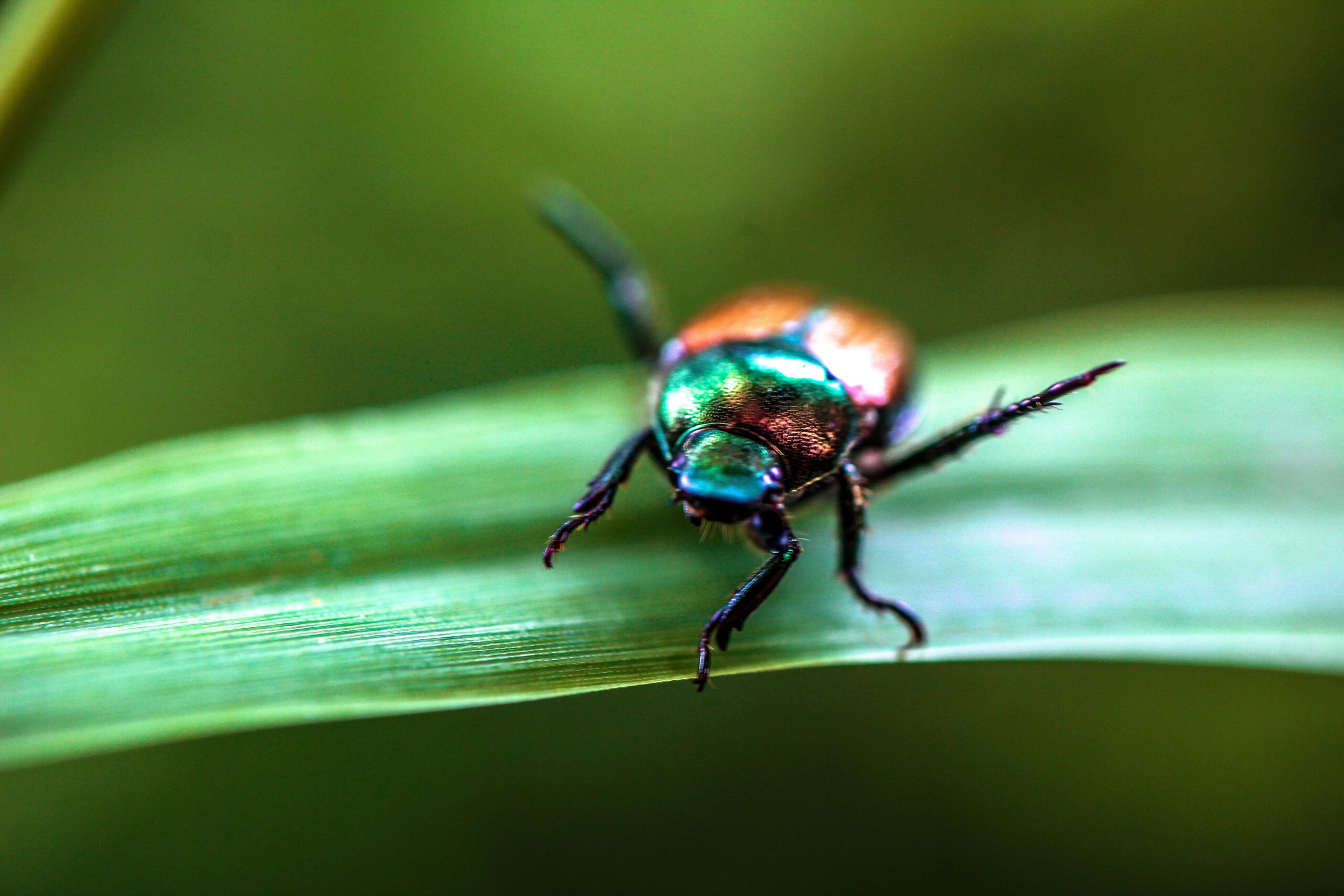Before we know it, the growing season for 2020 will be upon us. With the warmer weather will come, as always, pests in the urban landscape that can cause damage to your valued trees and shrubs. Just what are these bugs, and why do we consider them pests? In this post, we’ll look at one significant pest of the Richmond area: Japanese Beetles.
What Are Pests?
First, it’s helpful to define what a pest is. Nature doesn’t pass judgment on her own creatures. In the natural world, a pest is just an organism. However, an organism becomes a pest when it starts to become undesirable, based on human criteria. This usually means that they’re in conflict with humans in some way, by having an impact on human, animal, or plant health. Pests in the landscape context are usually weeds, undesirable rodents, and our favorites: invertebrates, pathogens, and nematodes.
Not all insects are pests. In fact, there are many beneficial insects that participate in ecosystems and control populations of insects that we consider pests. A great example is how the ladybug controls the aphid by feeding on them. When we’re considering how to define a pest, it’s important to mediate how we as humans are relating to our landscapes, and what our tolerance for certain elements of those ecosystems are. For some, the appearance of a Japanese beetle swarm wouldn’t register as much more than a nuisance. For others, especially growers and home gardeners, Japanese beetles are devastating harbingers of doom.
Enter the Japanese Beetle
If you’ve ever seen a swarm of Japanese Beetles feeding on a plant, you’ve probably felt a little uncomfortable. They are truly a vicious pest, capable of totally defoliating the foliage of almost 300 different host plants. Some favorites of their common in our area are the Japanese maple (and other species of maples), chestnut, black walnut, flowering crabapple, London planetree, a variety of fruit trees (including cherry and plum), and a few species of elm.
Adult beetles are roughly a half inch long, with metallic green, coppery bodies. Their full life cycle takes a year, and adults tend to emerge in June. It’s important to note that grubs are just as destructive as adults, feeding on the roots of turfgrasses and vegetable seedlings. Eggs are lain by females about 2-3 inches into the ground, which is there the grubs will spend about ten months developing.
Japanese beetles love moist conditions and are simultaneously very drought resistant. Grubs will burrow deeper into the soil during dry conditions and tend to gravitate to moist, grassy patches of ground to lay eggs and develop as grubs.
Managing the Japanese Beetle
For managing the Japanese beetle pest, there are a few key things to know. First, we don’t advise using traps on your property. They can attract more beetles than they capture, resulting in a greater concentration of plant damage than before.
As with all things plant health care, the proper plant selection is the first step to managing pests. Planting hosts that the beetles don’t prefer will go a long way. That said, if you have susceptible plants, you can always physically remove the beetles. This is especially helpful when populations are small, since beetles tend to attract more beetles once they establish.
Control with commercially registered insecticides is possible. We offer a few options, including a yearly preventative option that we apply in the early spring, a soil applied in season treatment done right before adult emergence in early June, and a foliar application approach applied when the adults have emerged and are actively feeding.
Conclusion
Hopefully, you found this information to be useful as you look ahead to the new growing season. As with many things, it is best to be proactive with regards to planning for your plants’ health. If you have a host plant that Japanese beetles like to feed on, let us know so we can help!
